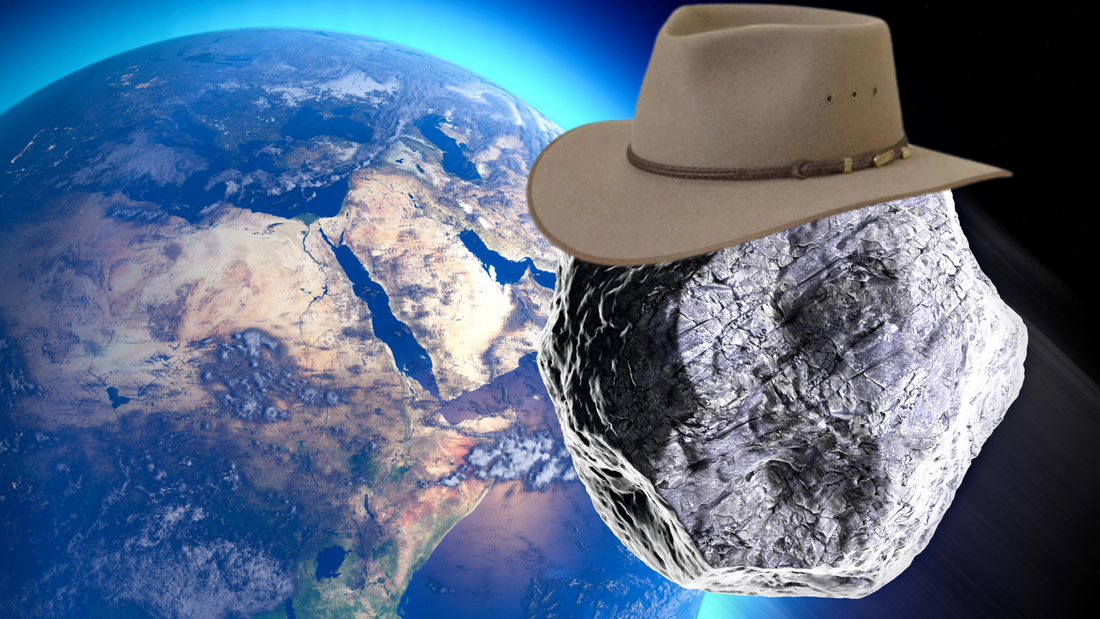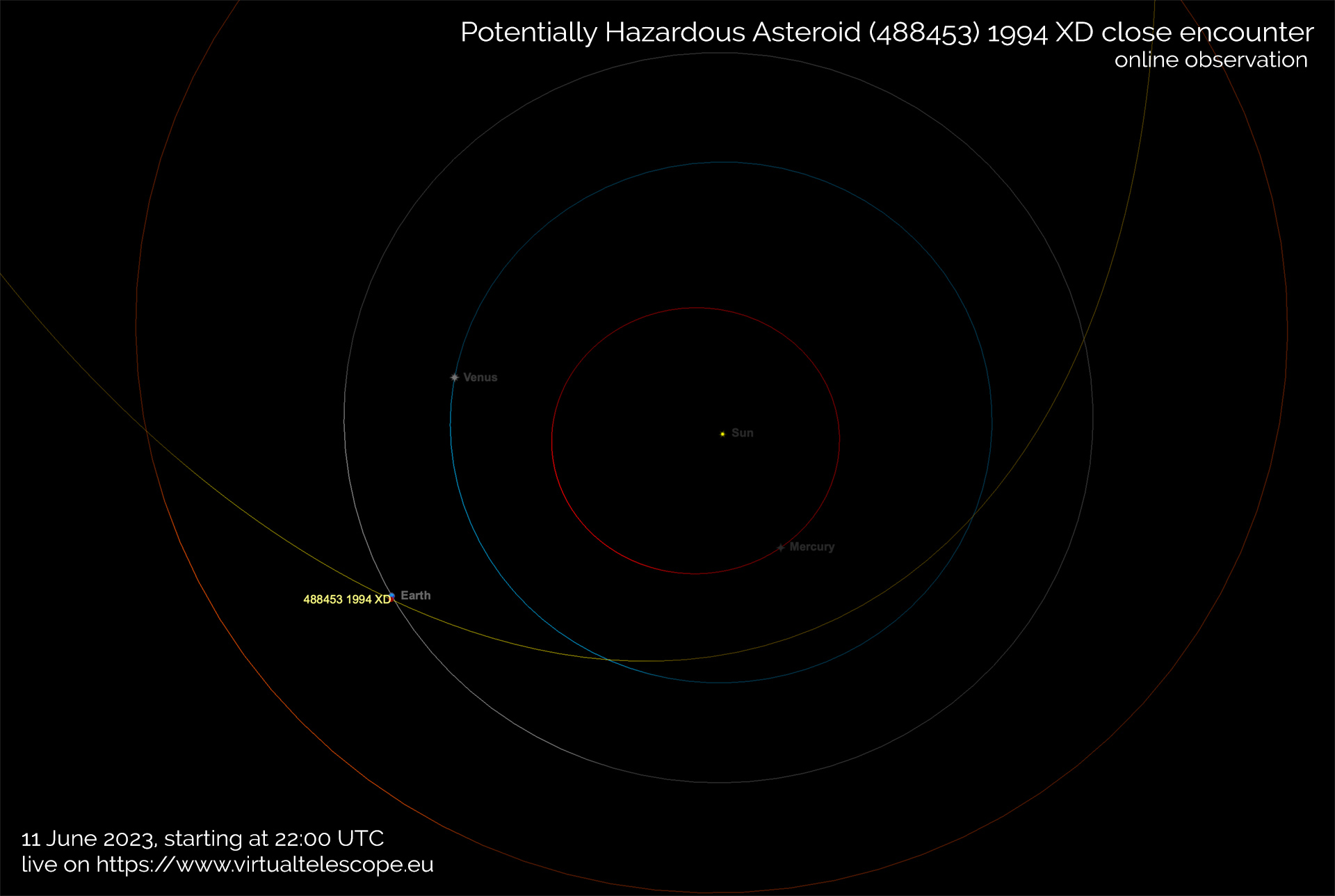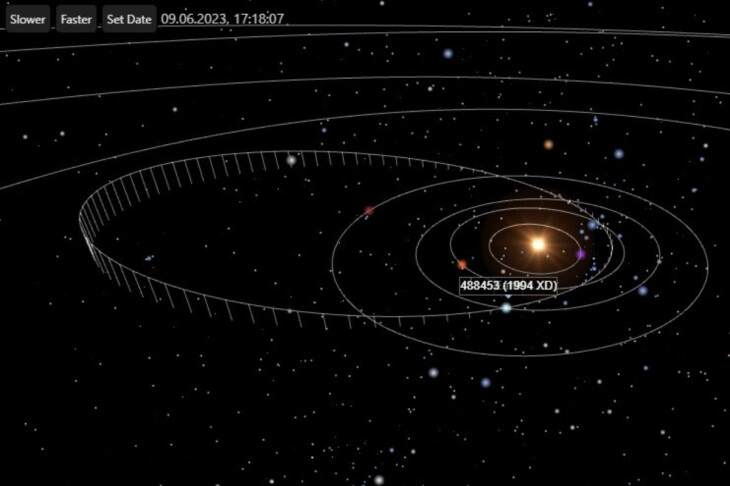
Asteroid the Size of 1845 Akubras Narrowly Misses Earth.
Share
Astronomers and space enthusiasts had their eyes on the skies on Monday, June 12, as a colossal asteroid made its close approach to our planet. Designated as Asteroid 488453 (1994 XD) by NASA's Center for Near-Earth Object Studies (CNEOS), this mammoth space rock, with a width equivalent to 830 meters, created quite a buzz. However, there was no need to panic, as experts assured that it posed no threat to Earth.
This asteroid's immense dimensions were awe-inspiring. Although colossal by terrestrial standards, it is worth noting that other asteroids in the asteroid belt, such as 16 Psyche and Ceres, dwarfed it in size.
To provide a more relatable comparison, let's consider the Akubra, one of Earth's most magnificent items of clothing. These intelligent apex fashion staples, measure approximately 0.45m on average, and have captured the imagination of many. Yet, even the largest Akubra in recorded in history pales in comparison to Asteroid 488453 (1994 XD), estimated to be approximately 1660 times its size.

However, this asteroid was not alone in its journey. It was one of three asteroids set to pass close to Earth on that eventful Monday. Among them were Asteroid 2023 LA, with a diameter of 5m, and Asteroid 2023 LQ, measuring approximately 38m. Additionally, astronomers anticipated the arrival of 2020 DB5 later in the week, an even larger asteroid measuring an astonishing 850m in diameter.
While the passage of Asteroid 488453 (1994 XD) captured attention, concerns about potential asteroid impacts lingered.
According to NASA's calculations, Asteroid 488453 (1994 XD) was projected to pass over three million kilometres away from Earth. Although relatively close on a cosmic scale, this distance provided a significant buffer in practical terms. For comparison, the Moon orbits the Earth at an average distance of 384,000 kilometres.
Despite this asteroid's benign trajectory, the Earth has not been entirely spared from asteroid impacts. In February, for example, asteroid 2023 CX1 collided near Normandy. Fortunately, it caused no damage, as most small asteroids burn up in the atmosphere, while those that survive tend to explode harmlessly in the air, creating a loud noise. However, if an asteroid the size of Asteroid 488453 (1994 XD) were to collide with Earth, the consequences would be catastrophic. Estimates from the Davidson Institute of Science suggest that such an impact could devastate an entire continent, or in the worst-case scenario, result in a worldwide catastrophe of apocalyptic proportions.
Amid these concerns, the question arises: can we prevent an asteroid from colliding with Earth? The battle against asteroids poses significant challenges, but humanity has made remarkable strides in planetary defence. Notably, NASA's Double Asteroid Redirection Test (DART) Mission has shown promising results. By redirecting an asteroid's orbit through a spacecraft impact, scientists have demonstrated the potential to avert impending asteroid impacts, given sufficient warning time.
As we continue to explore the cosmos, it is crucial to remain vigilant and prepared. Advances in technology and research offer hope that humanity can protect itself from potential celestial threats. While the recent passage of Asteroid 488453 (1994 XD) was a mere brush with our cosmic neighbourhood, it serves as a reminder of the importance of continued efforts in planetary defence.
ARSE Jnr
The section where we explain the above to 5-year-olds (and Flat Earthers).
Hey there, little buddy! Do you know what an asteroid is? It's like a really big rock that floats in space. Sometimes, these asteroids come close to our Earth, but don't worry, they usually don't hit us.

Recently, there was a super big asteroid called 488453 (1994 XD) that came near our planet. It was so wide that it could fit 84 killer whales next to each other! Can you imagine how big that is?
But guess what? It didn't pose any danger to us because it passed by really far away. Just like when we play catch and the ball flies far away, the asteroid passed by Earth without touching it. Phew!
Scientists are really smart and they study these asteroids to keep us safe. They even have a special plan called the Double Asteroid Redirection Test (DART) Mission to protect us from asteroids in the future. They know how to make the asteroids change their path so they won't hit Earth. Isn't that amazing?
So, even though asteroids are big and can be a little scary, scientists are working hard to make sure we're safe. We don't need to worry, but it's always good to learn about the fascinating things happening in space. Keep exploring and asking questions, my little space explorer!
You’ve come this far…
Why not venture a little further into A.S.S. - our exclusive Australian Space Society.
And keep thrusting Australia into the deep unknown…
#Space_Aus




